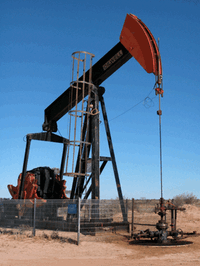The dip in oil prices isn't making a huge impact yet on the vast majority of U.S. shale production.
According to a report by research consultancy IHS Energy, most shale plays are economic and ~80% of potential drilling in 2015 would remain strong at WTI crude oil prices as low as $70 per barrel.
“Since 2008 the cumulative growth in U.S. tight oil production has been 3.5 million b/d—far exceeding supply gains from the rest of the world combined—making tight oil the key driver of global supply growth,” said Jim Burkhard, Vice President, IHS. “While current lower crude oil prices do present challenges for new investment, IHS analysis shows that the vast majority of potential U.S. supply growth in 2015 remain economical at $70 for WTI.”
WTI traded at ~$76 on Monday, a nearly 20% drop since September. As a result, operators in Texas, including ConocoPhillips and Eagle Ford-focused Clayton Williams, have already announced plans to potentially scale back their drilling programs in 2015.
Read more: Worried About Oil Prices? What to Expect in the Eagle Ford
Growth Still High, But Expected to Slow in U.S. Shale Plays
At lower prices, growth will slow, but still remain high, according to the IHS report. In 2015, IHS estimates U.S. shale production will grow by 700,000 b/d at an average price of $77 per barrel in 2015. By contrast, in 2014, growth from U.S. shale plays was more than 1-million b/d.
Approximately 80% of anticipated production has a break-even price between $50 to $69 per barrel, according to IHS analysis.
“Expectations of the future—and the trajectory of oil prices—means that prices do not need to fall to the breakeven price before psychology, investment, and thus output, is affected.”
The report notes that existing tight oil production is unaffected by the recent drop in oil prices. Existing wells can remain economical at crude oil prices far below the break-even price for new production because most of their costs are incurred during the initial development phase of the well.

